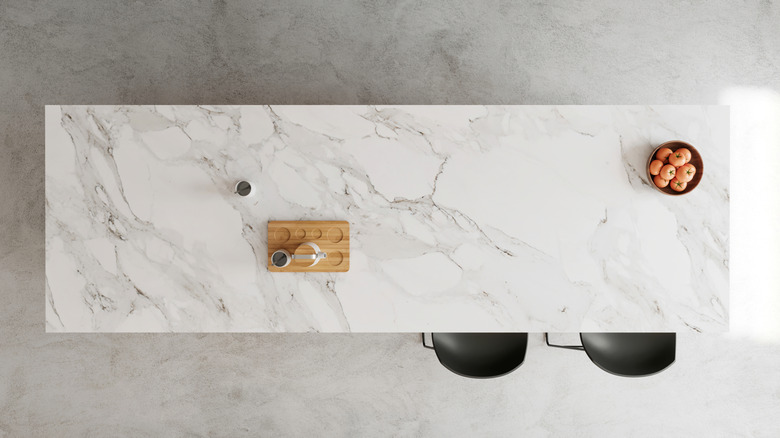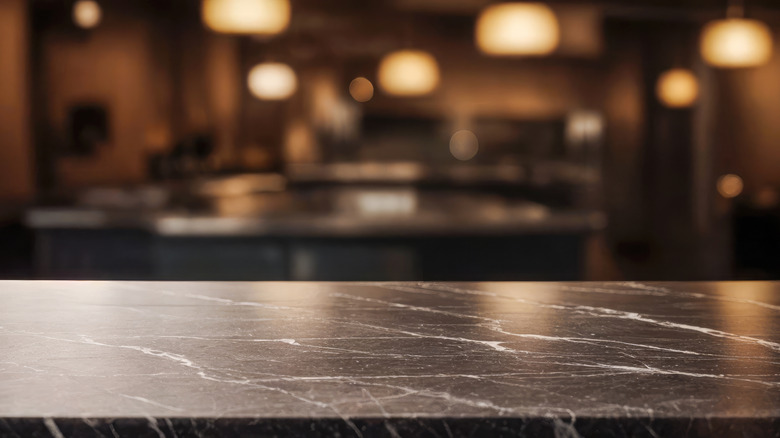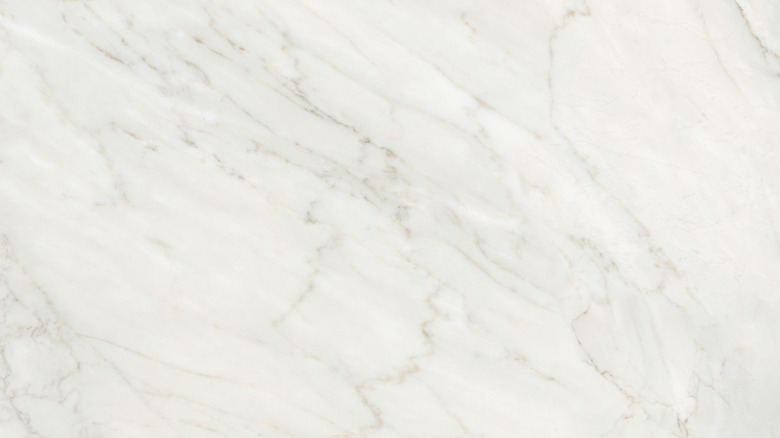Painting Faux Marble Countertops: A Money Saving Hack Or A Disaster To Avoid?
Looking to save some money on your next DIY remodel project? If you want to upgrade your countertops, you might be tempted to try one dubious but budget-friendly counter renovation hack: painting your countertops to look like faux marble. If the look of your countertops keeps you up at night but you just can't bring yourself to rip them out, this might seem like a convenient option. But, is it really worth it?
There are a few different methods you can use to paint your own marble countertops. The first is to do it yourself by hand, which will give you a lot of control over the process but also has way more room for error. The second is to use a DIY marble spray paint, which can look similar to real marbling but can still be difficult to place naturally. Wondering if either of these methods are right for you? Let's get into the real pros and cons of repainting your countertops.
The pros of painting marble countertops
The biggest reason you might choose to paint your marble countertops rather than replace them is to save money. On average, a marble countertop can cost you around $80 per square foot or more — that's not to mention the cost of ripping out your old countertops. Unless you're confident enough to remodel your kitchen countertops yourself, you'll also need to hire a professional to help you with installation, which is both costly and time-consuming. Painting your countertops is a true DIY option. A major downside of marble is that it's hard to care for, so choosing faux marble can be a benefit.
Another factor is that painting marble countertops is a lot less permanent than replacing them. Maybe you're a renter who wants to give a luxe look to your apartment without involving your landlord. Maybe you just want to test out the look of marble countertops without actually committing to them. Painting your countertops can give you room to restyle them later.
Painting your own countertops also takes a fraction of the time that replacing them would. Even when you leave out the time of picking out a marble countertop, ordering it, and scheduling an appointment with a contractor, installing the new countertop itself can still take several hours. Painting a white surface onto your countertop, adding marble spray paint over it, and sealing it all in will only take a couple hours at most, depending on drying time — although they can sometimes take a while to cure.
The cons of painted countertops
So, what about the downsides of painting your own countertops? For one, poorly painted marble countertops just look tacky. Even if you're a professional painter, emulating the natural patterns of marble by using paint can be extremely difficult. If even just one line looks a little off, you — and your guests — will never be able to unsee it.
Don't forget about marble's natural texture, too. The texture and feel of your countertops is essential, because you and everyone else in your household touch and interact with them all the time. Anyone will be able to tell at first touch that your marble countertop is fake — there's really no suitable paint that can mimic the smooth, cool surface of real marble.
Another downside is that it's a lot less durable. Spills, scratches, and water can all affect the painted surface of your countertop (and how easy it is to clean). If you're worried about their home's resale value, there's no chance that you'll be able to pass off painted marble as authentic; whether you're selling your home or ending your lease on it, you'll need to undo your hard work eventually.
In the end, painting faux marble by hand isn't a great idea, but you could try using marble spray paint if you like the look of it for a more consistent result. If you're desperate for a faux marble makeover, you could always try peel-and-stick countertops for a better look.


